
Topics
Guests
- "Remembering Stonewall"radio documentary by Dave Isay, adapted for television.
- David Carterhistorian and author of Stonewall: The Riots that Sparked the Gay Revolution.
Commemorations are being held across the world this weekend to mark the fortieth anniversary of the Stonewall uprising that launched the modern gay and lesbian rights movement. The uprising began in the morning on June 28, 1969, when New York City police officers raided a gay bar called the Stonewall Inn in Greenwich Village. As the police began dragging some of the patrons out, members of the gay community decided to fight back, sparking three days of rioting. We play a documentary, Remembering Stonewall, with the voices of people who were there and speak with historian David Carter. [includes rush transcript]
Transcript
AMY GOODMAN: Commemorations are being held around the world this weekend to mark the fortieth anniversary of the Stonewall uprising that launched the modern-day gay and lesbian rights movement.
The uprising began at 1:30 in the morning on June 28th, 1969, when New York City police officers raided a gay bar called the Stonewall Inn, located on Christopher Street in Greenwich Village. As the police began dragging some of the patrons out, members of the gay community fought back, sparking three days of rioting.
Historian Lillian Faderman wrote that Stonewall was, quote, “the shot heard round the world… crucial because it sounded the rally for the movement.”
Gay and lesbian groups soon sprung up around the country. According to one historian, at the time of Stonewall there were fifty to sixty gay groups here in the country. A year later, there were at least 1,500. Within two years, there were 2,500. One of the most significant groups, the Gay Liberation Front, was formed immediately after the Stonewall riots.
Later in the program, we’ll speak with historian David Carter, author of Stonewall: The Riots that Sparked the Gay Revolution. But first we turn to a radio documentary that was produced by Dave Isay in 1989 for the twentieth anniversary of the uprising. It’s called Remembering Stonewall.
GEANNE HARWOOD: I am Geanne Harwood, and my age is eighty.
BRUCE MERROW: I’m Bruce Merrow.
GEANNE HARWOOD: I don’t know if it’s really true, but now people do refer to us as the two oldest gay men in America. We do, I think, have maybe a record relationship of almost sixty years together. Being gay before Stonewall was a very difficult proposition, because we felt that in order to survive we had to try to look and act as rugged and manly as possible to get by in the society that was really very much against us.
RANDY WICKER: My name is Randy Wicker. I was the first openly gay person to appear on radio in 1962 and on television in 1964 as a self-identified homosexual. In the era before Stonewall, people felt a need to hide because of the precarious legal position they were in. They would lose their jobs. There was a great hostility, socially speaking, in the sense if people found out you were gay, they assumed you were a communist or a child molester or any of another dozen stereotypes that were rampant in the public media at the time.
JHERI FAIRE: I’m Jheri Faire, and I’m eighty years old. I started a gay lifestyle in 1948 when I was around thirty-nine or forty. At that time, if there was even a suspicion that you were a lesbian, you were fired from your job, and you were in such a position of disgrace that you slunk out without saying goodbye even to the people that liked you and you liked, never even bothered to clean your desk. You just disappeared. You just disappeared. You went quietly, because you were afraid that the recriminations that would come if you even stood there and protested would be worse than just leaving.
SYLVIA RIVERA: My name is Sylvia Rivera. My name before that was Ray Rivera, until I started dressing in drag in 1961. The era before Stonewall was a hard era. There was always the gay bashings on the drag queens by heterosexual men, women and the police. We learned to live with it, because it was part of the lifestyle at that time, I guess, but none of us were very happy about it.
SEYMOUR PINE: My name is Seymour Pine. In 1968, I was assigned as Deputy Inspector in charge of public morals in the first division in the police department, which covered the Greenwich Village area. It was the duty of public morals to enforce all laws concerning vice and gambling, including prostitution, narcotics, and laws and regulations concerning homosexuality. The part of the penal code which applied to drag queens was Section 240.35, section 4: “Being masked or in any manner disguised by unusual or unnatural attire or facial alteration; loiters, remains, or congregates in a public place with other persons so masked…”
SYLVIA RIVERA: At that time, we lived at the Arista Hotel. We used to sit around, just try to figure out when this harassment would come to an end. And we would always dream that one day it would come to an end. And we prayed and we looked for it. We wanted to be human beings.
DAVE ISAY: On Friday evening, June 27th, 1969, at about 11:45, eight officers from New York City’s public morals squad loaded into four unmarked police cars and headed to the Stonewall Inn here at 7th Avenue and Christopher Street. The local precinct had just received a new commanding officer, who kicked off his tenure by initiating a series of raids on gay bars. The Stonewall was an inviting target. Operated by the Gambino crime family without a liquor license, the dance bar drew a crowd of drag queens, hustlers and minors. A number of the bar’s patrons had spent the early part of the day outside the Frank Campbell Funeral Home, where Judy Garland’s funeral was held. She had died the Sunday before. It was almost precisely at midnight that the morals squad pulled up to the Stonewall Inn, led by Deputy Inspector Seymour Pine.
SEYMOUR PINE: There was never any reason to feel that anything of any unusual situation would occur that night.
SYLVIA RIVERA: You could actually feel it in the air. You really could. I guess Judy Garland’s death just really helped us really hit the fan.
SEYMOUR PINE: For some reason, things were different this night. As we were bringing the prisoners out, they were resisting.
SYLVIA RIVERA: People started gathering in front of the Sheridan Square Park right across the street from Stonewall. People were upset. “No, we’re not going to go!” And people started screaming and hollering.
SEYMOUR PINE: One drag queen, as we put her in the car, opened the door on the other side and jumped out, at which time we had to chase that person. And he was caught, put back into the car. He made another attempt to get out the same door — the other door. And at that point we had to handcuff the — the person. From this point on, things really began to get crazy.
ROBERT RIVERA: My name is Robert Rivera, and my nickname is Birdy, and I’ve been cross-dressing all of my life. I remember the night of the riots, the police were escorting the queens out of the bar and into the paddy wagon. And there was this one particularly outrageously beautiful queen with stacks and stacks of Elizabeth-style, Elizabeth Taylor-style hair, and she was asking them not to push her. And they continued to push her, and she turned around, and she mashed the cop with her high heel. She knocked him down, and then she proceeded to frisk him for her — the keys to the handcuffs that were on her. She got them, and she undid herself and passed them to another queen that was behind her.
SEYMOUR PINE: Well, that’s when all hell broke loose at that point. And then we had to get back into the Stonewall.
MARTIN BOYCE: My name is Martin Boyce, and in 1969 I was a drag queen known as Miss Martin. I remember on that night, when we saw the riot police, all of us drag queens, we linked arms like the Rockettes and sang this song we used to sing: “We are the Village girls, we wear our hair in curls. We wear our dungarees above our nellie knees.” And the police went crazy hearing that, and they just immediately rushed us. We gave one kick and fled.
RUDY: My name is Rudy, and the night of the Stonewall I was eighteen. And to tell you the truth, that night I was doing more running than fighting. I remember looking back from Tenth Street, and there on Waverly Street there was a police, I believe on his — a cop, and he’s on his stomach in his tactical uniform and his helmet and everything else, with a drag queen straddling him. She was beating the hell out of him with her shoe. Whether it was a high heel or not, I don’t know. But she was beating the hell out of him. It was hysterical.
MAMA JEAN: My name is Mama Jean. I’m a lesbian. I remember on that night I was in a gay bar, a woman’s bar, called Cookies. We were coming out of the gay bar, going toward Eighth Street, and that’s when we saw everything happening, blasting away — people getting beat up; police coming from every direction, hitting women as well as men with their nightsticks; gay men running down the street with blood all over their face. We decided right then and there — whether we’re scared or not, we didn’t think about it — we just jumped in.
SYLVIA RIVERA: Here, this queen is going completely bananas, you know, jumping on, hitting the windshield. The next thing you know, the taxicab was being turned over, the cars were being turned over, things — windows were shattering all over the place, fires were burning around the place. It was beautiful. It really was. It was really beautiful.
MAMA JEAN: I remember one cop coming at me, hitting me with the nightstick on the back of my legs. I broke loose, and I went after him. I grabbed his nightstick. My girlfriend went behind him. She was a strong son of a gun. I wanted him to feel the same pain I felt. And I kept on saying to him, “How do you like the pain? Do you like it? Do you like it?” And I kept on hitting him and hitting him. I was angry. I wanted to kill him. At that particular minute, I wanted to kill him.
SYLVIA RIVERA: I wanted to do every destructive thing that I could think of at that time to hurt anyone that had hurt us through the years.
MAMA JEAN: It’s like just when you see a man protecting his own life. They weren’t the “queens” that people call them; they were men fighting for their lives. And I’d fight alongside them any day, no matter how old I was.
SYLVIA RIVERA: A lot of heads were bashed that night. A lot of people were hurt. But it didn’t hurt their true feelings. They all came back for more and more. Nothing — that’s when you could tell that nothing could stop us at that time or at any time in the future.
AMY GOODMAN: Remembering Stonewall, an excerpt of the documentary by Dave Isay. When we come back, we’ll play more of that documentary, and we’ll speak with David Carter, author of Stonewall: The Riots that Sparked the Gay Revolution. Stay with us.
[break]
AMY GOODMAN: Judy Garland singing “Get Happy.” Yes, Judy Garland’s funeral was the day of the Stonewall uprising, and we’ll speak about its connection. […]
As we continue our discussion about the fortieth anniversary of the 1969 Stonewall uprising, we’re joined by historian David Carter. He is author of the book Stonewall: The Riots that Sparked the Gay Revolution.
That point of Judy Garland —-
DAVID CARTER: Mm-hmm.
AMY GOODMAN: —- she had died a week before.
DAVID CARTER: Right.
AMY GOODMAN: Her funeral, that day.
DAVID CARTER: That’s correct.
AMY GOODMAN: Was there a connection?
DAVID CARTER: No, no, not at all. The idea of Judy Garland’s funeral having a connection is something that came years later. Actually, at first, it was only written about to attack us. The first time it’s mentioned in print that I’m aware of is a right-wing writer for the Village Voice
mocking the Stonewall uprising. He says, “I don’t know what happened. You know, the homosexuals last night, whether ’cause the fool moon or Judy Garland died, they just went crazy.” So it was initially used to attack us and to disparage us. I could go on and on about the Garland myth, but…
AMY GOODMAN: Well, let’s go back to, well, why you wrote this book. In fact, you were just a kid in high school, is that right, when the Stonewall riot happened?
DAVID CARTER: That’s right. I was between my junior and senior years of high school.
AMY GOODMAN: Did you hear about it? Where were you? Where were you growing up?
DAVID CARTER: Well, I grew up in Jesup, Georgia, small town in southeast Georgia. That summer I was on a National Science Foundation study — I was on a grant, rather, at the University of Georgia, Athens, Georgia, studying entomology. And I didn’t know I was gay. And the people gathered in a room every night in the dormitory to watch TV. And this news clip came on from — I think it was Walter Cronkite, saying that everybody knows that gay bars are raided — that’s nothing new — but this time there’s been a raid on a bar in Greenwich Village, and the gay people fought back — that’s different.
And, you know, that did not — you know, I didn’t know I was gay, myself, and there weren’t many details there. And I kind of thought, “Oh, that’s interesting. That’s nice.” You know? But then later, my senior year of high school, as the gay liberation movement got underway, and in particular the Gay Activists Alliance was very effective at getting the media living in Jesup, Georgia, I saw on the evening news, I saw in magazines, I heard on radio, I saw in the alternative newspaper, The Great Speckled Bird of Georgia, how the activists were challenging powerful people in a very confrontational, militant and beautifully creative way. And that made a big impression on me.
AMY GOODMAN: So, take us through — just as we were listening to that incredible documentary by Dave Isay, which was the voices of the people who experienced this — their lives before, then the moment of those days of rioting, and the days after, why this was such a seminal moment.
DAVID CARTER: Well, it was such a seminal moment because I think it was the shock of what happened. Nobody expected anything like that. And it shocked gay people. I think, you know, Kay Tobin said it — the great lesbian leader from before Stonewall, I think she said it best to me in a phone call recently. She said that she thought it touched people’s hearts, because it took so much courage to stand up against the police and fight back, when gay people were such a very small and despised minority.
But it was also, I think, the shock of the new. You know, Immanuel Kant said that the French Revolution wasn’t so important, because to the — the importance of the French Revolution came not so much from the people who fought in it, but those who witnessed it. It changed their consciousness. And I collected many stories of people hearing the news who were not there and the amazing effect it had on them.
AMY GOODMAN: Talk about some of those stories.
DAVID CARTER: Well, for example, Ginny Apuzzo, who later became the executive director of the Gay Rights National Lobby and adviser in the Clinton White House, she was in a monastery in New York City trying to work out the meaning of her lesbianism. That’s why she had become a nun. And then she heard about Stonewall over the radio. And she said, “It was like a lightning bolt.” And she got in touch with a lot of anger, that how her life — her life’s energy had been denied. And she got energized, and she left the convent within two or three weeks.
Michael Denneny was a student at the University of Chicago. He went to a coffeehouse, favorite coffeehouse of his, because it had so many newspapers. He picked up a New York newspaper, read about gay people fighting, particularly was struck by the idea that they were fighting the police and that more police were injured than gay people. And that was a thunderclap to him. He said it never occurred to him to think of homosexuality in a political context, because it was such a psychologized issue.
I have a story of somebody who was serving in Vietnam, read it in a military newspaper and decided, you know, if he lived, if he came back to the United States, he would come out. And he did.
Another person in Vietnam was working there as a journalist. The news is coming through the ticker tape, and the paper jammed. And the last thing before it jammed was that homosexuals rioted in Greenwich Village.
I have people in the Caribbean, people in Europe getting the news and being shocked by it.
AMY GOODMAN: Did laws change afterwards?
DAVID CARTER: They began to change. That took several years. It took several years to get any laws through. But the homophile movement had been making a lot of progress before Stonewall, and they kept on making the progress. For example, they had started an effort to legalize gay bars before Stonewall and made a lot of progress on that. That’s one reason Stonewall had opened. And then that continued. But it was like — you know, it was like, I think, adding a rocket propeller to the weak homophile movement that existed before, and then things took off. So it took — but it took several years, but laws, you know, began being passed very fast in the early ’70s.
AMY GOODMAN: Allen Ginsberg, the famous beat poet, gay himself, said they “lost that wounded look” that night, Stonewall.
DAVID CARTER: Yeah, Allen had an ability to put his finger on the pulse of things, and that’s one of the most quoted lines about the Stonewall riot. And I think he just — he nailed it, as he so often did.
AMY GOODMAN: And how did attitudes change afterwards towards the gay community?
DAVID CARTER: Well, I think, you know, there was a lot of immediate admiration on the part of straight people watching it. They thought, “Wow, you know, we thought you guys would never fight back. Good for you.” Of course, many straight people mocked it. They thought, you know — there was one person said, “Oh, my god, now the fairies are revolting!” It’s like, you know, “Oh, my god, first, you know, black people were acting up, and women are acting up. My god, now even homosexuals are acting up!” So, you know, there were many disparate reactions, both immediately and in the longer run.
AMY GOODMAN: You’re now making a film about this. And how does Stonewall forty years ago relate to what we’re talking about today? I mean, in our next segment we’ll be speaking with a writer about how, at this point, it’s marriage and the military that are the flashpoint issues for the gay community.
DAVID CARTER: You know, what frustrates me — look, I’m all for those issues being addressed, believe me, but what frustrates me is I feel that so often people forget we have the same civil rights protections on a federal level as we had at the time of Stonewall: zero. Congress has not passed one law that gives us any federal protection. In 2005, four years ago, 90 percent of the American public, according to the Gallup poll, said that the — you know, it should not be possible to fire a person because they’re gay. We’re not at this point asking Congress or the Obama administration to lead; we’re asking them to follow at this point. We’re asking them to follow. Can’t they even do that?
AMY GOODMAN: David Carter, I want to thank you very much for being with us. You’ve been out promoting a film called Outrage.
DAVID CARTER: Yes. I think when the people ask me how to celebrate Stonewall — and there’s a film, that’s not gotten nearly the attention it deserves, called Outrage, which is about how some of the, you know, people who are most stopping — and actually not only stopping the progress of the gay rights movement, but hurting the gay rights movement — are in fact closeted homosexuals, mostly Republican, but some Democrats. And I think I’d love for people to please try to see this film. You know, if you can’t — it’s not showing in a theater, you can see — request it, order it online, Netflix, whatever. But please see this film. I think it’s very important for all people.
AMY GOODMAN: Pride march is this weekend all over the country.
DAVID CARTER: And the world.
AMY GOODMAN: And the world. Where will you be?
DAVID CARTER: I’m going to be doing this as much as possible, because I think, you know, this kind of activism is the best way to celebrate the event.
AMY GOODMAN: Historian David Carter, author of Stonewall: The Riots that Sparked the Gay Revolution.
As we turn back now to David Isay’s documentary, Remembering Stonewall. It was produced on the twentieth anniversary of the uprising. This weekend is the fortieth anniversary. This excerpt features the voices of New York Police Deputy Inspector Seymour Pine; Joan Nestle, the founder of the Lesbian Herstory Archives; transgender activist Sylvia Rivera; and others. It begins with Geanne Harwood.
GEANNE HARWOOD: When Stonewall happened, Bruce and I were still in the closet, where we had been for nearly forty years. But we realized that this was a tremendous thing that had happened at Stonewall, and it gave us a feeling that we were not going to be remaining closeted for very much longer. And soon thereafter, we did come out of the closet.
GINNY APUZZO: My name is Ginny Apuzzo. In 1969, I was in the convent. And when Stonewall hit the press, it hit me with a bolt of lightning. It was as if I had an incredible release of my own outrage at having to sequester so much of my life. I made my way down. I seem to recall in subsequent nights being down on the, you know, kind of just on the periphery, looking. Observer. Clearly an observer. Clearly longing to have that courage to come out. And it was a matter — as I recall, it was only a matter of weeks before I left the convent and started a new life.
HENRY BAIRD: I’m Henry Baird. In 1969, I was in the US Army, a specialist three stationed at Long Bend Post near Saigon in Vietnam. I remember I was having lunch in the Army mess, reading the armed forces news summary of the day, and there was a short paragraph describing a riot led by homosexuals in Greenwich Village against the police. And my heart was filled with joy. I thought about what I had read frequently, but I had no one to discuss it with. And secretly within myself, I decided that when I came back stateside, if I should survive to come back stateside, I would come out as a gay person. And I did.
SEYMOUR PINE: For those of us in public morals, after the Stonewall incident, things were completely changed from what they had previously been. They suddenly were not submissive anymore. They now suddenly had gained a new type of courage. And it seemed as if they didn’t care anymore about whether their identities were made known. We were now dealing with human beings.
SYLVIA RIVERA: Today I’m a thirty-eight-year-old drag queen. I can keep my long hair, I can pluck my eyebrows, and I can work wherever the hell I want. And I’m not going to change for anybody. If I change, then I feel that I’m losing what 1969 brought into my life, and that was to be totally free.
AMY GOODMAN: An excerpt of Dave Isay’s documentary Remembering Stonewall. You can hear and watch the whole documentary at our website, democracynow.org. Thanks to Hany Massoud and Nicole Salazar, Nicole Martin, Steve Martinez, for adapting this for television. If you want to see the video images, the photos, you can go to our website at democracynow.org. And thanks to the New York Public Library for some of those images in their upcoming exhibition 1969: The Year of Gay Liberation.

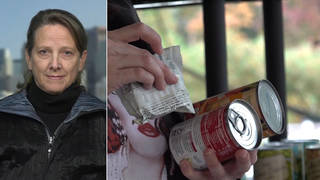
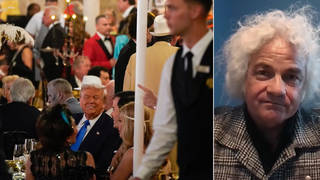
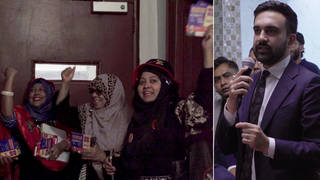
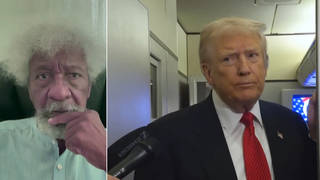





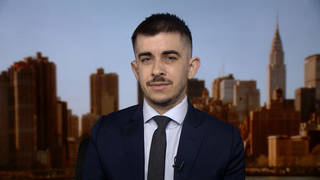
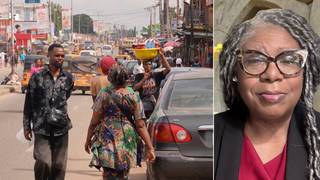
Media Options